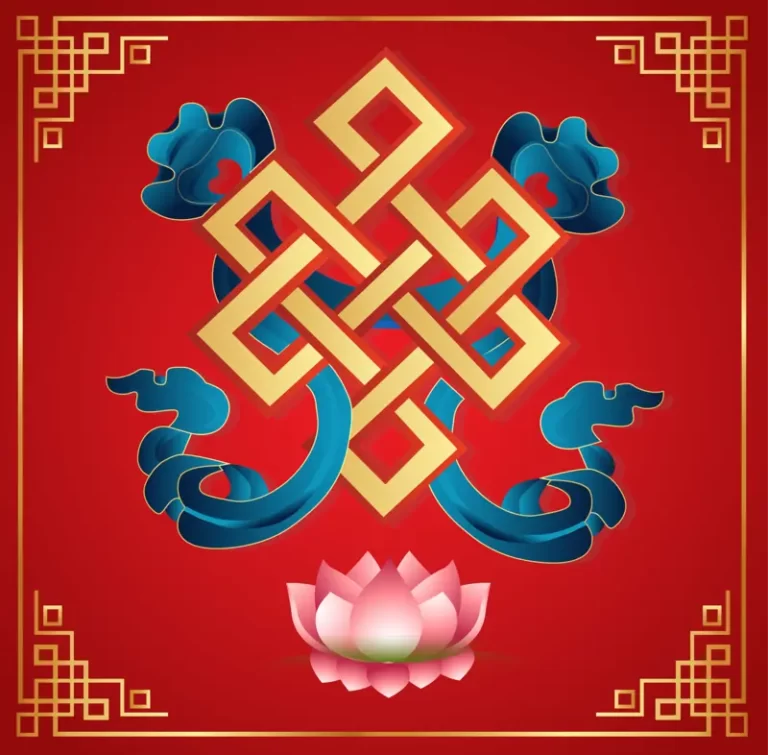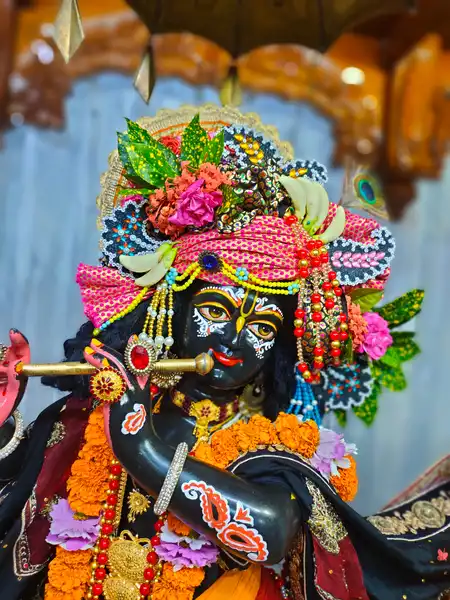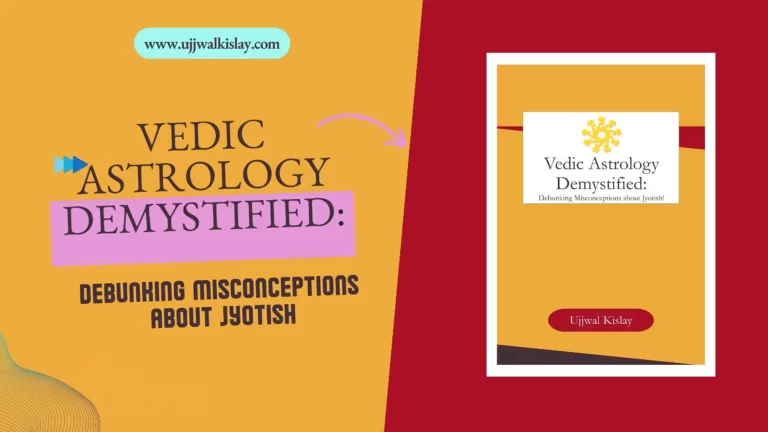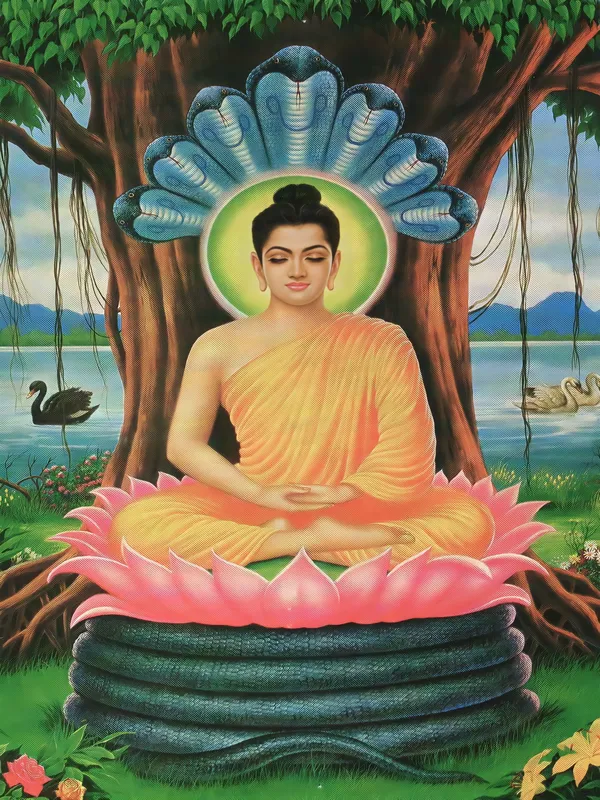How to perform Kundali Milan for compatibility using Vedic Astrology?
Introduction:

Kundali Milan, a practice within Vedic Astrology, involves the meticulous assessment of compatibility between prospective marital partners. This intricate procedure necessitates the acquisition of precise birth details, the computation of birth charts (Kundalis), and the meticulous evaluation of compatibility through Guna Milan, which assigns points based on eight multifaceted facets such as temperament and well-being. Generally, a Guna Milan total exceeding 18 is viewed favorably. Doshas, representing unfavorable planetary configurations, are also taken into account, with potential remedies explored.
It is of utmost importance to seek guidance from a qualified astrologer for an in-depth analysis, engaging in discussions regarding the findings and the potential strengths and challenges within the relationship. While Kundali Milan can provide valuable insights, it should be regarded as just one among numerous factors in the marriage decision-making process, alongside personal preferences, effective communication, values, and pragmatic considerations.
Ashtakuta Kundali Milan:

North Indian Ashtakuta Kundali Milan plays a crucial role in the assessment of compatibility in horoscope matching. Also referred to as “Guna Milan,” this widely recognized technique in Vedic astrology serves as a vital tool for evaluating the compatibility between potential Var (Groom) and Kanya (Bride) contemplating marriage. The process entails a comprehensive analysis of the birth charts of both individuals, with a focus on comparing the eight distinct factors (gunas) considered pivotal in fostering a successful and harmonious relationship.
Here are the eight gunas or factors considered in Ashtakuta Kundali Milan:
Varna (1 point):
The initial component of Horoscope Matching revolves around Varna, which scrutinizes the compatibility of individuals’ temperaments and spiritual inclinations. In the realm of Vedic astrology, Varna is categorized into four distinct groups:
- Brahmin: This classification encompasses individuals associated with priestly or scholarly vocations, characterizing them with attributes like wisdom, knowledge, and spirituality.
- Kshatriya: This category comprises individuals involved in warrior, administrative, or leadership roles, known for their qualities of courage, valor, and a strong sense of responsibility.
- Vaishya: Individuals engaged in business, commerce, or entrepreneurial pursuits fall under this category, exhibiting traits such as practicality, ambition, and a focus on material wealth.
- Shudra: This group includes individuals involved in service-oriented professions or manual labor, known for their qualities of humility, dedication, and willingness to serve.
In the context of Ashtakuta Kundali Milan, the Varna Kuta factor contributes one point, with both individuals receiving full points if they share the same Varna.
Vashya (2 points):
Within Horoscope Matching, Vashya serves as an indicator of mutual attraction and influence between partners. Vashya Kuta classifies the relationship between individuals’ Moon signs into five distinct categories:
- Chatushpada Vashya: This highest compatibility level is achieved when both individuals have Moon signs associated with four-legged animals, such as Aries, Taurus, Sagittarius, and Capricorn.
- Dwipada Vashya: Good compatibility is denoted when both individuals have Moon signs linked to two-legged animals, including Gemini, Cancer, Virgo, Libra, Scorpio, and Aquarius.
- Jalchara Vashya: Average compatibility is suggested when one person’s Moon sign falls under a watery sign, such as Cancer, Scorpio, or Pisces, and the other individual’s Moon sign belongs to a two-legged animal sign.
- Vanachara Vashya: Similarly, an average level of compatibility is indicated when one individual’s Moon sign is associated with a forest-dwelling sign, such as Aries, Taurus, or Sagittarius, while the other person’s Moon sign belongs to a two-legged animal sign.
- Keeta Vashya: The lowest level of compatibility is implied when one person’s Moon sign corresponds to an insect sign, such as Gemini, Virgo, or Libra, and the other individual’s Moon sign is aligned with a two-legged animal sign.
In the Ashtakuta Kundali Milan system, Vashya Kuta carries a weight of two points, with full points awarded when both individuals have Moon signs falling under the highest compatibility category (Chatushpada Vashya).
Tara (3 points):
Tara, within the framework of Horoscope Matching, serves as an assessment of the health and overall well-being of the individuals involved in the prospective relationship. Tara Kuta operates on the premise that each nakshatra (birth star) is associated with specific energies or powers, and the compatibility between the nakshatras of two individuals can significantly influence their relationship dynamics. The determination of one’s birth star or nakshatra is contingent upon the Moon’s position at the moment of birth.
Tara Kuta classifies the nakshatras into three distinct categories:
- Janma Tara: This category pertains to the individual’s own nakshatra and carries the highest weightage in the compatibility evaluation. With a total of 27 nakshatras, each divided into four quarters, the compatibility of the Janma Tara is determined by calculating the number of nakshatras from one individual’s birth star to the birth star of the other person. Specific points are assigned based on this count.
- Sampat Tara: Sampat Tara signifies prosperity and compatibility related to wealth and material resources. The counting method used for Janma Tara is also applied to Sampat Tara, with specific points allocated based on the count.
- Vipat Tara: Vipat Tara signifies challenges, difficulties, and inherent incompatibility. The counting method employed for Janma Tara is likewise utilized for Vipat Tara, with specific points attributed according to the count.
In the Ashtakuta Kundali Milan system, Tara Kuta carries a weight of three points. A higher point allocation is granted when there is a closer count between the nakshatras, indicating a stronger level of compatibility between the individuals.
Yoni (4 points):
Within the domain of Kundali Milan, the fourth component, known as Yoni, scrutinizes the sexual compatibility and innate instincts between prospective partners. Yoni Kuta classifies the nakshatras (birth stars) of individuals into 14 distinct animal categories, symbolizing various species found in nature. Each nakshatra is specifically associated with one of these animal categories, and compatibility between nakshatras is gauged based on these groupings.
The 14 Yoni categories are as follows:
- Ashwa (Horse)
- Gaja (Elephant)
- Mesha (Sheep/Ram)
- Sarpa (Serpent)
- Shwana (Dog)
- Marjara (Cat)
- Mushaka (Rat)
- Gau (Cow)
- Mahisha (Buffalo)
- Vyaghra (Tiger)
- Mriga (Deer)
- Vanara (Monkey)
- Nakula (Mongoose)
- Simha (Lion)
In the assessment of Yoni Kuta, compatibility between two nakshatras is established by comparing their respective Yoni categories. Generally, it is believed that nakshatras sharing the same Yoni category exhibit superior compatibility, while nakshatras associated with incompatible Yoni categories may encounter challenges in terms of mutual understanding and compatibility. Up to four points are allotted for the Yoni analysis component in the Horoscope Matching process.
Graha Maitri (5 points):

In Horoscope Matching, Graha Maitri centers on assessing the mental compatibility and the degree of friendship between prospective partners. Within Vedic astrology, each planet is attributed a specific level of camaraderie or antagonism with other celestial bodies. Graha Maitri Kuta scrutinizes the compatibility between the Moon signs of individuals by considering the amicability or hostility of the ruling planets.
In the Ashtakuta Kundali Milan system, Graha Maitri Kuta is accorded a significance of five points. Full points are awarded when the ruling planets of the Moon signs exhibit a friendly relationship, signifying a high level of compatibility between the individuals. Neutral scores are assigned when both individuals share the same Moon sign. Conversely, no points are allotted when the Moon signs have an enmity relationship, suggesting a potential lack of compatibility.
Gana (6 points):
In the realm of Kundali Milan, Gana serves as a categorization tool, grouping individuals into three distinct categories based on their inherent nature: Deva (Divine), Manushya (Human), or Rakshasa (Demonic). This classification aims to evaluate the compatibility between them. Gana Kuta categorizes individuals according to their nakshatra (birth star) or Moon sign:
- Deva Gana: Those falling within the Deva Gana category are associated with divine qualities, often characterized as noble, virtuous, and spiritually inclined. Nakshatras linked with Deva Gana include Ashwini, Mrigashira, Punarvasu, Pushya, Hasta, Swati, Anuradha, Shravana, and Revati.
- Manushya Gana: Individuals belonging to the Manushya Gana exhibit human qualities, emphasizing practicality, balance, and a sense of social responsibility. Nakshatras associated with Manushya Gana encompass Bharani, Rohini, Ardra, Purva Phalguni, Uttara Phalguni, Purva Ashadha, Uttara Ashadha, Purva Bhadrapada, and Uttara Bhadrapada.
- Rakshasa Gana: Rakshasa Gana individuals are characterized by more assertive, competitive, or intense traits, often associated with a more aggressive nature. Nakshatras affiliated with Rakshasa Gana include Krittika, Ashlesha, Magha, Chitra, Vishakha, Jyeshtha, Moola, Dhanishta, and Satabhisha.
In the Ashtakuta Kundali Milan system, Gana Kuta carries a weight of six points. Full points are allocated when both individuals belong to the same Gana, signaling a high level of compatibility. Conversely, if the Ganas are dissimilar, no points are granted.
Bhakoota (7 points):
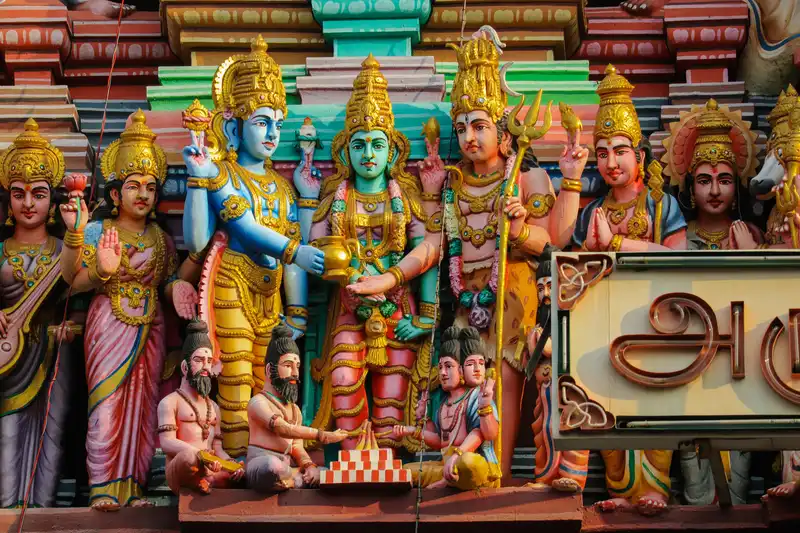
In Kundali Milan, Bhakoota serves as an indicator of emotional compatibility and stability within the prospective partnership. Bhakoota assessment is based on the placement of the Moon signs of the individuals and is divided into seven distinct categories:
- Shubha Bhakoota: When the Moon signs that both individuals share a friendly relationship, it signifies positive emotional compatibility and harmony. This category includes Moon signs that are either in trine (1st, 5th, and 9th positions) or in the same sign.
- Dwandva Bhakoota: When the Moon signs are in opposition to each other, it suggests some challenges in emotional compatibility. This group comprises Moon signs positioned 6th to 8th from each other.
- Vashya Bhakoota: Emotional compatibility is indicated when the Moon signs are positioned 2nd to 12th from each other.
- Dina Bhakoota: Moderate emotional compatibility is suggested when the Moon signs are positioned 3rd to 11th from each other.
- Tatkal Bhakoota: A moderate level of emotional compatibility is indicated when the Moon signs are positioned 4th to 10th from each other.
- Yoni Bhakoota: A moderate level of emotional compatibility is implied when the Moon signs are positioned 5th to 9th from each other.
- Vedha Bhakoota: Incompatibility is indicated when the Moon signs are positioned 7th to 7th from each other.
In the Ashtakuta Kundali Milan system, Bhakoota carries a significance of seven points. The allocation of points depends on the category of compatibility to which the Moon signs belong. Full points are granted when the Moon signs fall under the Shubha Bhakoota category, signifying the highest level of emotional compatibility.
Nadi (8 points):
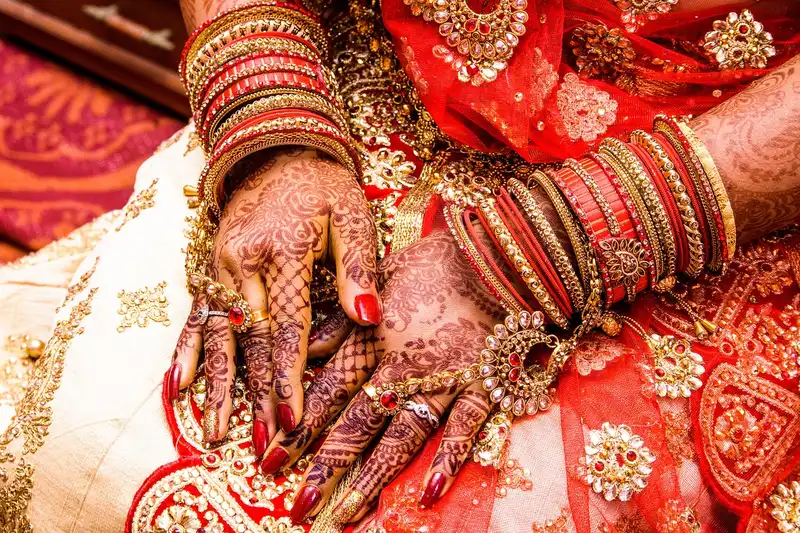
In Horoscope Matching, Nadi serves as a crucial assessment of the health, genetic compatibility, and overall well-being of the prospective couple. Nadi Kuta relies on the categorization of the individuals’ nakshatras (birth stars) into three distinct groups:
- Adi (Vata) Nadi: This category embodies the Vata (wind) element, signifying individuals with an energetic and dynamic nature. Nakshatras associated with Adi Nadi include Ashwini, Ardra, Punarvasu, Uttara Phalguni, Hasta, Jyeshtha, Moola, Shatabhisha, and Purva Bhadrapada.
- Madhya (Pitta) Nadi: Representing the Pitta (fire) element, this category characterizes individuals with a passionate and intense disposition. Nakshatras linked with Madhya Nadi encompass Bharani, Mrigashira, Purva Phalguni, Chitra, Anuradha, Uttara Ashadha, Dhanishta, Purva Ashadha, and Uttara Bhadrapada.
- Antya (Kapha) Nadi: Reflecting the Kapha (earth) element, this category portrays individuals with a calm and stable nature. Nakshatras associated with Antya Nadi include Krittika, Rohini, Pushya, Ashlesha, Magha, Swati, Vishakha, Shravana, and Revati.
In the Ashtakuta Kundali Milan system, Nadi Kuta carries a weight of eight points. Full points are granted when the individuals possess different Nadis, indicating enhanced genetic compatibility and a balanced energy dynamic. Conversely, if both individuals share the same Nadi, no points are allotted, as this is considered inauspicious due to potential health concerns.
Manglik Dosha:

Manglik Dosha, also known as Mangal Dosha or Kuja Dosha, is a concept deeply rooted in Vedic astrology, particularly concerning the positioning of the planet Mars (Mangal) within an individual’s birth chart. It is believed that if Mars is unfavorably placed in certain houses, it may have detrimental effects on one’s married life, making it a significant consideration in Horoscope Matching.
Manglik Dosha is said to occur when Mars is situated in any of the following houses of the birth chart: the first, second, fourth, seventh, eighth, or twelfth. Some astrologers also consider Mars placed in the second house from the Moon as a factor for Manglik Dosha.
The presence of Manglik Dosha is associated with the potential for challenges and disharmony in marriage. It is often linked to traits like short temper, aggression, and misunderstandings in relationships. Traditionally, there is a belief that if a person with Manglik Dosha marries a non-Manglik individual, it may lead to conflicts, health issues, or even the early demise of the non-Manglik partner.
It is crucial to understand that the impact of Manglik Dosha can vary from person to person and is contingent upon the overall strength of Mars in the birth chart, as well as the influence of other planetary factors. Not all individuals with Manglik Dosha encounter negative consequences in their marriages, and the severity of the Dosha can be mitigated through certain remedies or compensatory factors.
Common remedies suggested to alleviate the effects of Manglik Dosha include:
- Manglik-Manglik Match: Marrying another person with Manglik Dosha is believed to nullify the negative effects, as both partners share the same Dosha.
- Performing Pujas and Rituals: Specific pujas, mantras, prayers, and rituals dedicated to appeasing Mars are recommended to reduce its negative influence.
- Kumbh Vivah: A symbolic marriage ceremony to a banana tree, peepal tree, or a silver/gold idol of Lord Vishnu is conducted, followed by the actual marriage. This practice is believed to offset the Manglik Dosha.
- Wearing Gemstones: Some astrologers suggest wearing a coral (Moonga) gemstone, associated with Mars, to balance its influence and mitigate the effects of Manglik Dosha.
It is essential to consult a qualified astrologer who can analyze your individual birth chart and provide personalized guidance regarding Manglik Dosha. They can offer specific remedies or alternative solutions tailored to your unique circumstances, helping you make informed decisions about marriage and partnerships.
Conclusion:
Kundali Milan, also known as Kundali Matching or Horoscope Compatibility Matching, is a customary practice in Vedic Astrology to evaluate the compatibility of two individuals before marriage. This process involves the scrutiny of the birth charts (Kundalis) of the prospective bride and groom to ascertain their suitability as a couple. Here’s a step-by-step guide on how to conduct Kundali Milan for compatibility:
- Obtain precise birth information for both the bride and groom, including their birth date, time, and place. Accurate data is vital for an effective Kundali Milan.
- Calculate the birth charts (Kundalis) for both individuals using reliable Vedic astrology software or consult a qualified astrologer. The Kundali depicts the positions of celestial bodies at the time of birth.
Evaluate the Guna Milan:
- The primary method used in Kundali Milan is Guna Milan, which assigns points (Gunas) based on the moon’s positions in the respective Kundalis. The cumulative score can range from 36 points.
- There are eight dimensions of compatibility known as “Kutas” that are considered in Guna Milan:
a. Varna Kuta (1 point): Assesses spiritual compatibility.
b. Vashya Kuta (2 points): Measures dominance and control dynamics.
c. Tara Kuta (3 points): Evaluate the health and well-being of the partnership.
d. Yoni Kuta (4 points): Determines sexual compatibility.
e. Graha Maitri Koota (5 points): Evaluates mental and intellectual compatibility.
f. Gana Kuta (6 points): Assesses compatibility based on temperament.
g. Bhakoot Kuta (7 points): Considers overall prosperity and happiness in the relationship.
h. Nadi Koota (8 points): Evaluates health, progeny, and genetic compatibility.
- Sum up the points obtained in each of the eight Kutas to derive the overall Guna Milan score.
Analyze the Guna Milan Score:
Compatibility is determined based on the total Guna Milan score:
- A score exceeding 18 is generally considered favorable for marriage.
- A score below 18 may signify potential issues and warrants closer examination.
- A perfect score of 36 is regarded as ideal, indicating a high level of compatibility.
Consider Doshas:
- In addition to the Guna Milan score, astrologers also scrutinize the presence of Doshas, which are unfavorable planetary combinations in the Kundalis. The most common Doshas include Mangal Dosha (Mars Dosha) and Bhakoot Dosha. Remedies or precautions may be recommended to mitigate these Doshas.
Consult an Astrologer:
- Seek the guidance of a qualified Vedic astrologer to conduct the Kundali Milan and provide insights and recommendations based on the analysis.
Seek Compatibility Insights:
- Engage in a discussion with the astrologer to gain insights into potential strengths and challenges within the relationship.
Make an Informed Decision:
- Utilize the Kundali Milan results as one of the factors in your decision-making process regarding marriage. It’s essential to balance astrology with other considerations such as individual compatibility, communication, shared values, and personal preferences.
Remember that Kundali Milan is just one facet of making a marriage decision. It does not guarantee a successful marriage, and personal compatibility and understanding are equally pivotal. Approach this process with a holistic perspective to make an informed and well-rounded decision about your marriage.
I aspire for this article to provide you with assistance. Should you discover value within these words, kindly contemplate sharing them with your loved ones. I invite you to spare a moment to offer your thoughts and appraisals below. For further remarkable content akin to this, I encourage you to delve into our website. Additionally, I extend an invitation to subscribe to my YouTube channel for forthcoming materials of similar nature. Lastly, feel unrestrained to establish a connection with me through social media. Wishing you a splendid day ahead!
हरि ॐ तत्सत्
FAQs:
Here are a few frequently asked questions (FAQs) regarding Kundali Milan for compatibility:


